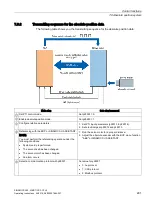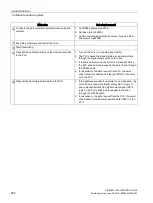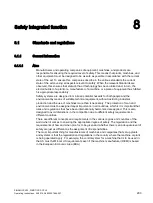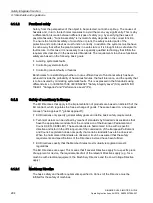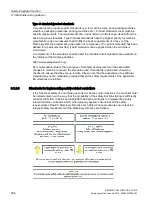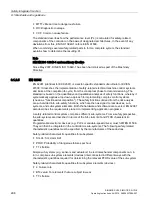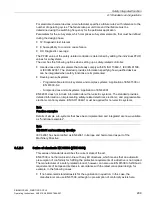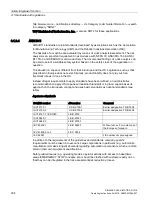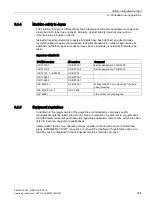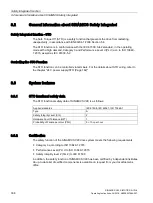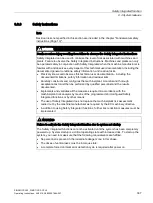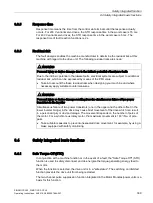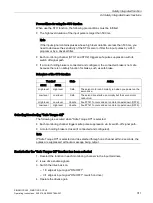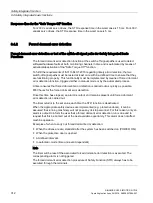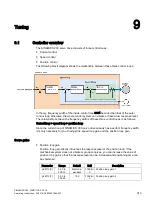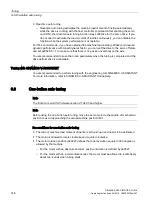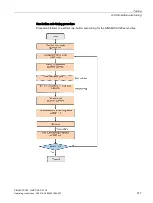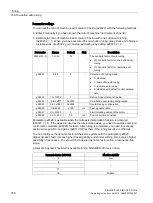
Safety Integrated function
8.1 Standards and regulations
SINAMICS V90, SIMOTICS S-1FL6
304
Operating Instructions, 04/2019, A5E36037884-007
http://www.ul.com → certifications directory → UL Category code/ Guide information → search
for category "NRGF"
TUV Rheinland of North America, Inc. is also an NRTL for these applications.
8.1.3.4
ANSI B11
ANSI B11 standards are joint standards developed by associations such as the Association
for Manufacturing Technology (AMT) and the Robotic Industries Association (RIA).
The hazards of a machine are evaluated by means of a risk analysis/assessment. The risk
analysis is an important requirement in accordance with NFPA 79, ANSI/RIA 15.06, ANSI
B11.TR-3 and SEMI S10 (semiconductors). The documented findings of a risk analysis can
be used to select a suitable safety system based on the safety class of the application in
question.
The situation in Japan is different from that in Europe and the US. Legislation such as that
prescribed in Europe does not exist. Similarly, product liability does not play such an
important role as it does in the US.
Instead of legal requirements to apply standards have been defined, an administrative
recommendation to apply JIS (Japanese Industrial Standard) is in place: Japan bases its
approach on the European concept and uses basic standards as national standards (see
table).
Japanese standards
ISO/IEC number
JIS number
Comment
ISO12100-1
JIS B 9700-1
Earlier designation TR B 0008
ISO12100-2
JIS B 9700-2
Earlier designation TR B 0009
ISO14121- 1 / EN1050
JIS B 9702
ISO13849- 1
JIS B 9705-1
ISO13849- 2
JIS B 9705-1
IEC 60204-1
JIS B 9960-1
Without annex F or route map of
the European foreword
IEC 61508-0 to -7
JIS C 0508
IEC 62061
JIS number not yet assigned
In addition to the requirements of the guidelines and standards, company-specific
requirements must be taken into account. Large corporations in particular (e.g. automobile
manufacturers) make stringent demands regarding automation components, which are often
listed in their own equipment specifications.
Safety-related issues (e.g. operating modes, operator actions with access to hazardous
areas, EMERGENCY STOP concepts, etc.) should be clarified with customers early on so
that they can be integrated in the risk assessment/risk reduction process.


